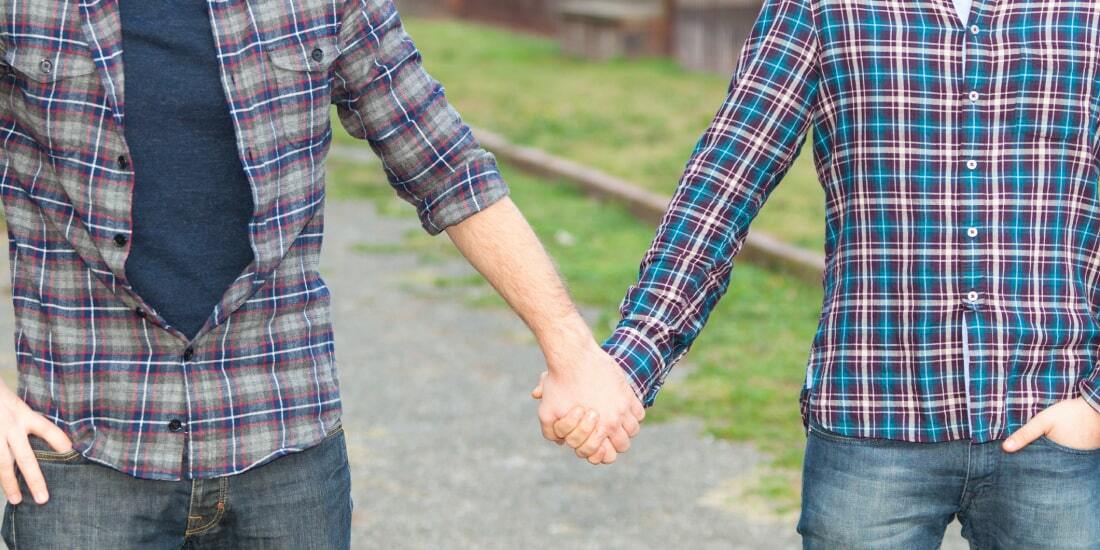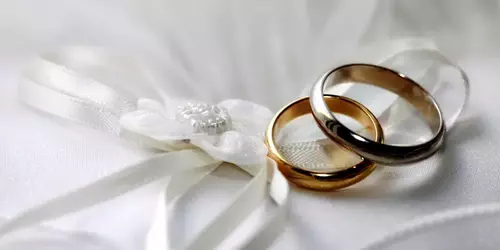Civil Partnerships - Can You Still Claim HMRC Marriage Allowance?
- What is the HMRC Marriage Allowance?
- Who qualifies for it?
- How do you apply for the HMRC Marriage Allowance?
Civil partnerships have been allowed for same sex couples from 2005, but same sex marriage has only been permitted since 2014. After the Supreme Court ruling that civil partnerships should be extended to opposite sex couples, civil partnerships have been available to opposite sex couples from 2019, so now they’re available to everyone. But what does this mean for the HMRC Marriage Allowance? Do civil partnerships still count?

What's On This Page?
Click the links below and head straight to a specific section of the article.
Civil partnerships themselves will grant your relationship legal recognition, but this is only slightly different from marriage. While marriage is formed by an exchange of vows and a religious ceremony before signing a certificate, civil partnerships are formed just by signing a certificate. Fundamentally, though, they are the same.
The good news is, for tax purposes, civil partnerships are treated in law exactly as marriage is. This means you’re able to claim the HMRC Marriage Allowance within a civil partnership, as well as other kinds of marriage tax allowance. Now everyone has the choice of entering into a marriage or civil partnership without fear of missing out on any marriage tax allowances.
A staggering 2.4 million couples are eligible for the HMRC Marriage Allowance but are currently missing out on hundreds of pounds a year. The process is explained in detail below and gives an indication of how much you could receive.
HMRC Marriage Allowance
Overview
The HMRC Marriage Allowance, or Marriage Tax Allowance, was introduced in 2015 and is available to all married couples and those in civil partnerships. It works by adjusting the personal allowance, which is the amount of your income you’re entitled to without being taxed. You can transfer £1,260 of your personal allowance to your partner in order to receive a tax break. As long as one of you doesn’t pay tax and the other does, you’re entitled to the marriage tax allowance.
Criteria
For the avoidance of doubt, only the person who doesn’t pay tax is able to apply for the HMRC Marriage Allowance as it is their personal allowance they’re changing. If it’s applied for the other way around, it will most likely not go through.
You’re able to claim the HMRC Marriage Allowance if all of the following apply:
Neither person was born before 6th April 1935
One person pays tax at a rate no higher than the basic rate (20%)
The other person doesn’t use all of their personal allowance (and is also not taxable at a higher rate)
You are also able to claim the HMRC Marriage Allowance if you are on maternity leave.
Process
The person with lower taxable income gives up 10% of their personal allowance and the recipient partner receives tax credit against their liability, reducing the amount of tax they pay. This can be up to £252 for the current tax year.
The HMRC Marriage Allowance works by adjusting both of your tax codes. You’ll usually have your tax codes changed in two days, but you’ll only see the effects after your employer meets their payroll.
Backdating
What’s helpful to know is that when you apply for the HMRC Marriage Allowance, you don’t need to reapply. You’ll automatically receive the tax break every subsequent year. You can also backdate the claim by up to four tax years. Any backdated claims will be paid as a lump sum.
Previous years aren’t worth as much, but if you apply for this year and backdate four years, the five year amount for your HMRC Marriage Allowance would be over £1,200. You should also note that you can only apply for the years in which you both qualify.
Example
As an example of the HMRC Marriage Allowance, Kevin earns £11,000 a year, which is well under the £12,570 personal allowance and therefore doesn’t pay any tax. There’s enough leeway to transfer the £1,260 to his partner, Joel. This means that Kevin needs to pay tax on any income above £11,310 (the personal allowance minus the amount transferred).
Joel earns £20,000 and is a basic rate taxpayer. His personal allowance effectively increases to £13,830 after Kevin applies for the HMRC Marriage Allowance. So rather than paying tax on £7,430, the adjusted personal allowance means Joel will be paying tax on £6,360. This adjustment saves £214 in tax, which is how much Joel’s disposable income will increase by.
Take Note
If you are a higher rate taxpayer, earning just over £50,270, you are unable to apply for the HMRC Marriage Allowance. This is because it will adjust your allowance to the point where you will be paying less tax and will then be in the basic rate of tax.
While the HMRC Marriage Allowance automatically applies every year from the point of application, you will need to contact HMRC to cancel it if the marriage or civil partnership comes to an end or one of you has died.
In 2021, nearly 1.8 million couples were using the HMRC Marriage Allowance, and if you’re eligible, it’s an easy way to receive an extra couple of hundred pounds a year.
This is a simplified version of events, but the HMRC Marriage Allowance is not as straightforward as increasing your partner’s personal allowance.
The marriage tax may not always be beneficial though. If you’re earning slightly below the personal allowance and your partner is earning slightly above it, going through this process can leave you out of pocket as you can only transfer the £1,260 in its entirety. It’s important to check your financial circumstances before applying for the HMRC Marriage Allowance.
If you'd like to know how long it will take to receive your marriage tax allowance money, read our guide.
Married Couple’s Allowance
Married Couple’s Allowance is often confused with the HMRC Marriage Allowance. It’s available if one person was born before 6th April 1935 and it gives you a reduction against your tax bill, which is 10% of the full allowance. See here for how to claim marriage allowance.
Married Couple’s Allowance can take off between £401 and £1,037.50 from one partner’s tax bill, depending on earnings. In this way alone, the Married Couple’s Allowance is more beneficial than the HMRC Marriage Allowance.
You’re able to claim the Married Couple’s Allowance if all of the following apply:
One person was born before 6th April 1935
You’re married or in a civil partnership
You’re living together
Unlike the HMRC Marriage Allowance, your personal allowance can be transferred to your partner if your tax liability is too low to make use of it. However, as one person needs to be born before 1935 to qualify, it will become less and less likely that couples will be able to benefit from this marriage tax allowance as the years go by.
For newlyweds and anyone planning on getting married or entering into a civil partnership in the future, the HMRC Marriage Allowance will be the go-to marriage tax.
Related articles

What Martin Lewis Has Said About Marriage Tax Allowance

Are Married Couples Taxed Separately in the UK? The Tax Benefits of Marriage

Retirement and the Marriage Allowance

What You Need to Know About Marriage Allowance

How Do I Claim a Marriage Tax Allowance Refund?

The Marriage Allowance: How It Works and How To Claim It

Marriage Tax Allowance and Married Couple’s Allowance 2024







